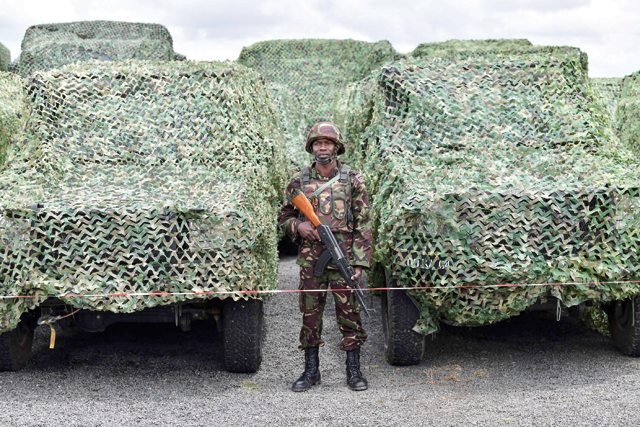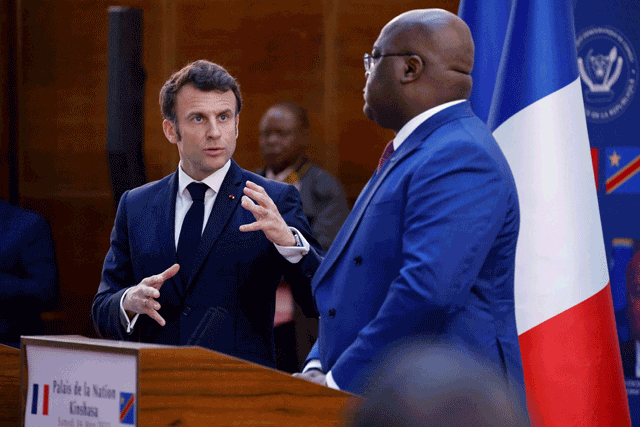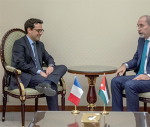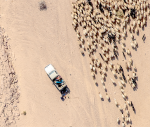You are here
S.Sudanese troops join regional force in east DRC
By AFP - Apr 02,2023 - Last updated at Apr 02,2023
GOMA, DRC — South Sudanese soldiers arrived in eastern Democratic Republic of the Congo (DRC) on Sunday, an AFP journalist saw, joining a regional military force in an area battered by the M23 rebellion.
At least 45 soldiers touched down in the city of Goma in the late morning, with further contingents expected to arrive at later dates.
The South Sudanese soldiers are part of the seven-nation East African Community (EAC) military force, which was created last June to stabilise eastern DRC.
Much of the region is plagued by dozens of armed groups, a legacy of regional wars that flared in the 1990s and 2000s.
In North Kivu province, M23 rebels have captured swathes of territory and advanced within several dozen kilometres of its capital Goma since reemerging from dormancy in late 2021.
The EAC force — which comprises Kenyan, Burundian and Ugandan troops as well as South Sudanese — is due to supervise a planned pull-back of M23 rebels.
“Welcome to Goma,” said Col. Jok Akech, an officer with the EAC force, addressing the new South Sudanese arrivals.
“Now you are in a different operational environment. You have to be ready.”
It is not yet clear how large the South Sudanese contingent will be, nor where it will deploy. In December, South Sudan said that it would send 750 soldiers to the DRC.
Failed initiatives
The M23 first came to international prominence in 2012 when it captured Goma, before being driven out and going to ground.
But the Tutsi-led group reemerged from dormancy in late 2021, arguing that the government had ignored a promise to integrate its fighters into the army.
It then won a string of victories against the Congolese army and captured large chunks of North Kivu, triggering a humanitarian crisis as hundreds of thousands of people fled its advance.
Several regional initiatives intended to defuse the conflict have failed.
A ceasefire mediated by Angola was due to take effect on March 7, for example, but collapsed almost immediately.
March 30 was supposed to mark the end of the withdrawal of “all armed groups”, according to a timetable adopted in mid-February by the EAC.
The deadline was not respected.
The EAC force commander, Kenyan General Jeff Nyagah, told reporters on Friday that the planned M23 withdrawal would be “sequenced”.
‘Neutral force’
Although initially greeted with enthusiasm, many Congolese are increasingly critical of the EAC force because of dashed hopes that regional troops would take the fight directly to the M23.
On Sunday, the spokesman for the newly deployed Ugandan contingent Captain Kato Ahmad Hassan said the troops will be “neutral force and we will not fight the M23”.
M23 fighters are expected to withdraw from the areas occupied by the Ugandan military under the plan, he said.
The rebel group remains in control of substantial areas of North Kivu, and has almost completely surrounded Goma, which has Rwanda to its east and Lake Kivu to its south.
The DRC accuses its smaller neighbour Rwanda of backing the M23, something the United States, several other Western countries and independent UN experts agree with, but which Kigali denies.
Although there has been no major fighting between the Congolese army and the M23 for several weeks, fighting has with rival militias and insecurity remains rampant.
Fourteen people were killed in separate attacks in North Kivu over the weekend, in circumstances that remain unclear, according to residents, local officials and medical sources.
Related Articles
NAIROBI — Kenya’s President William Ruto announced on Wednesday that Nairobi was deploying troops to eastern Democratic Republic of the Cong
KAMANYOLA, DRC — The United Nations on Wednesday kicked off the withdrawal of MONUSCO peacekeeping forces from the Democratic Republic of th
KINSHASA — Brussels said on Saturday it was setting up a “humanitarian air bridge” to deliver aid to conflict-hit eastern Democratic Republi
















